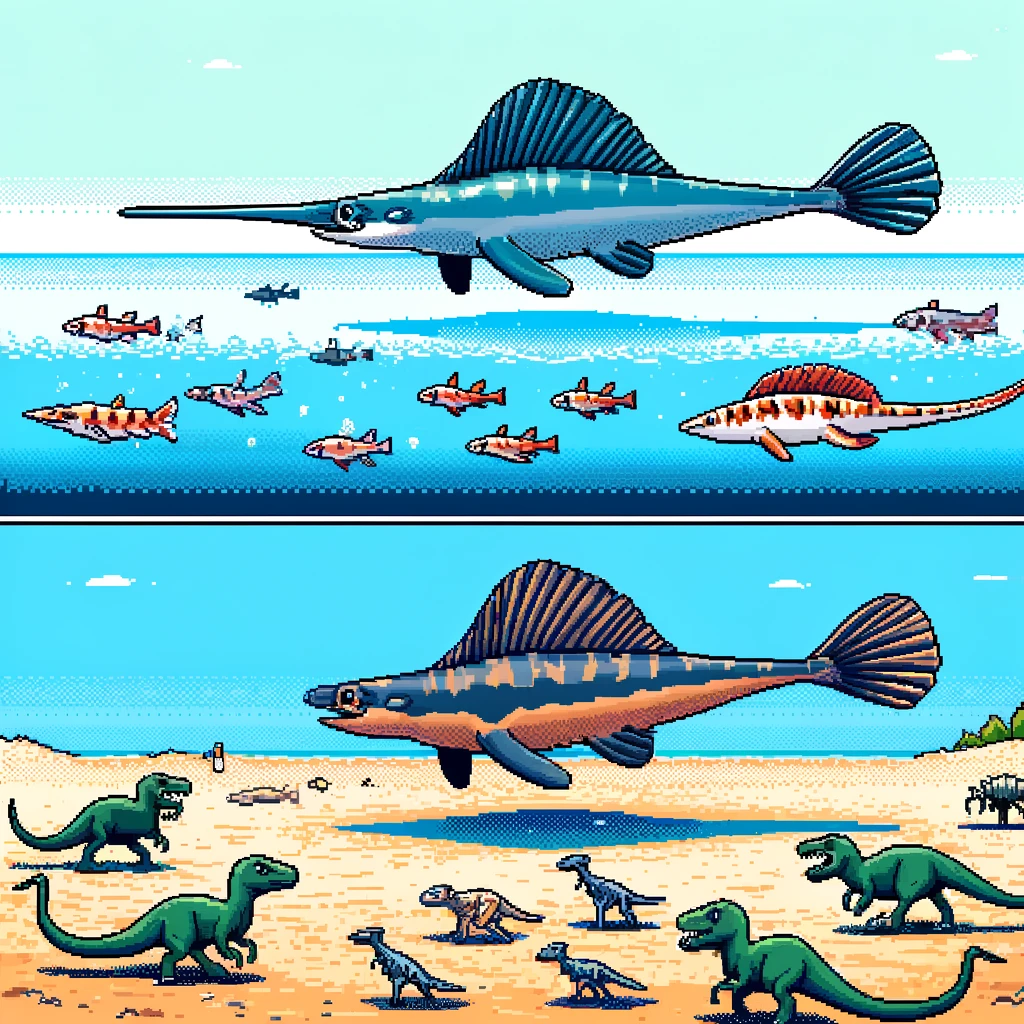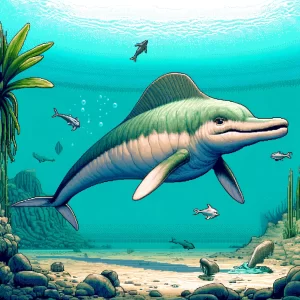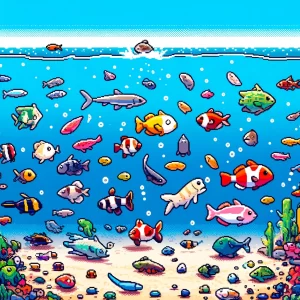
Swimming with Giants: The Ancient Aquatic Reptiles That Were Not Dinosaurs
When we think of the titans of the Mesozoic era, dinosaurs often steal the spotlight with their impressive sizes and intriguing diversity. However, the oceans of that era were ruled by equally fascinating creatures: the ichthyosaurs and mosasaurs. These marine reptiles, though often grouped with dinosaurs in popular imagination, were quite different in terms of evolution, anatomy, and ecology.
Not All Giants Walked on Land
Ichthyosaurs and mosasaurs swam the Earth’s oceans at different times and had distinctly different origins compared to their land-dwelling ‘cousins’, the dinosaurs. Dinosaurs, creatures like Tyrannosaurus rex and Triceratops, are members of a specific lineage of reptiles that mostly lived on land. In contrast, ichthyosaurs and mosasaurs were fully aquatic.
Ichthyosaurs: Dolphins of the Dinosaur Era
Ichthyosaurs appeared around 250 million years ago and bore a striking resemblance to modern dolphins—an example of convergent evolution, where unrelated species evolve similar traits to adapt to similar environments. These sleek, fish-like predators had long, narrow jaws and bodies streamlined for swimming, adaptations perfect for a life spent hunting in the vast oceans.
Mosasaurs: Rulers of the Cretaceous Seas
Mosasaurs, on the other hand, thrived towards the end of the Mesozoic era, around 100 million years ago. They were more akin to gigantic lizards, with elongated bodies and powerful tails that propelled them through the water. Their limbs transformed into flippers, and they could grow up to 17 meters in length, dominating the marine food chains until their extinction alongside the dinosaurs 66 million years ago.
Key Differences from Dinosaurs
One of the main differences between these aquatic reptiles and dinosaurs is their adaptation to aquatic life. Unlike dinosaurs, which mostly roamed the land, ichthyosaurs and mosasaurs were adapted to living and hunting in water. Their limbs evolved into flippers, and they developed tails that helped them navigate through marine environments, much like today’s sharks and whales.
Another distinction lies in their reproductive strategies. Ichthyosaurs were viviparous, giving birth to live young in the water, which is a rare trait among reptiles but common in marine mammals. This adaptation was crucial for their fully aquatic lifestyle. Fossil evidence suggests that mosasaurs might have given birth to live young as well, although their reproductive methods are less well understood than those of ichthyosaurs.
Why Does This Matter?
Understanding the differences between these marine reptiles and dinosaurs provides insight into the diverse evolutionary adaptations that have occurred on Earth. It highlights the complexity of life’s response to different environmental challenges and stresses the importance of aquatic ecosystems in the history of our planet.
Studying these creatures also sheds light on modern conservation efforts by helping scientists understand how marine vertebrates have adapted—or failed to adapt—to rapid changes in their environments over geological timescales. This knowledge is crucial as we face today’s biodiversity crisis and seek to preserve our modern marine ecosystems.
Engage and Discover
If you’re fascinated by these ancient creatures of the deep and want to learn more about the Earth’s prehistoric past, why not visit your local natural history museum? Or dive into a paleontology book to discover the underappreciated wonders of our planet’s marine history.
Unlock the Secrets of Science
Get ready to unlock the secrets of science with ‘This Week in Science’! Our newsletter, designed specifically for educators and science aficionados, delivers a weekly digest of revolutionary research, innovative discoveries, and motivational tales from the scientific frontier. Subscribing is your key to a treasure trove of insights that can revolutionize your approach to teaching and learning science. Sign up today at no cost and start a journey that deepens your understanding and passion for science.
About the Author
Jon Scaccia, with a Ph.D. in clinical-community psychology and a research fellowship at the US Department of Health and Human Services with expertise in public health systems and quality programs. He specializes in implementing innovative, data-informed strategies to enhance community health and development. Jon helped develop the R=MC² readiness model, which aids organizations in effectively navigating change.



